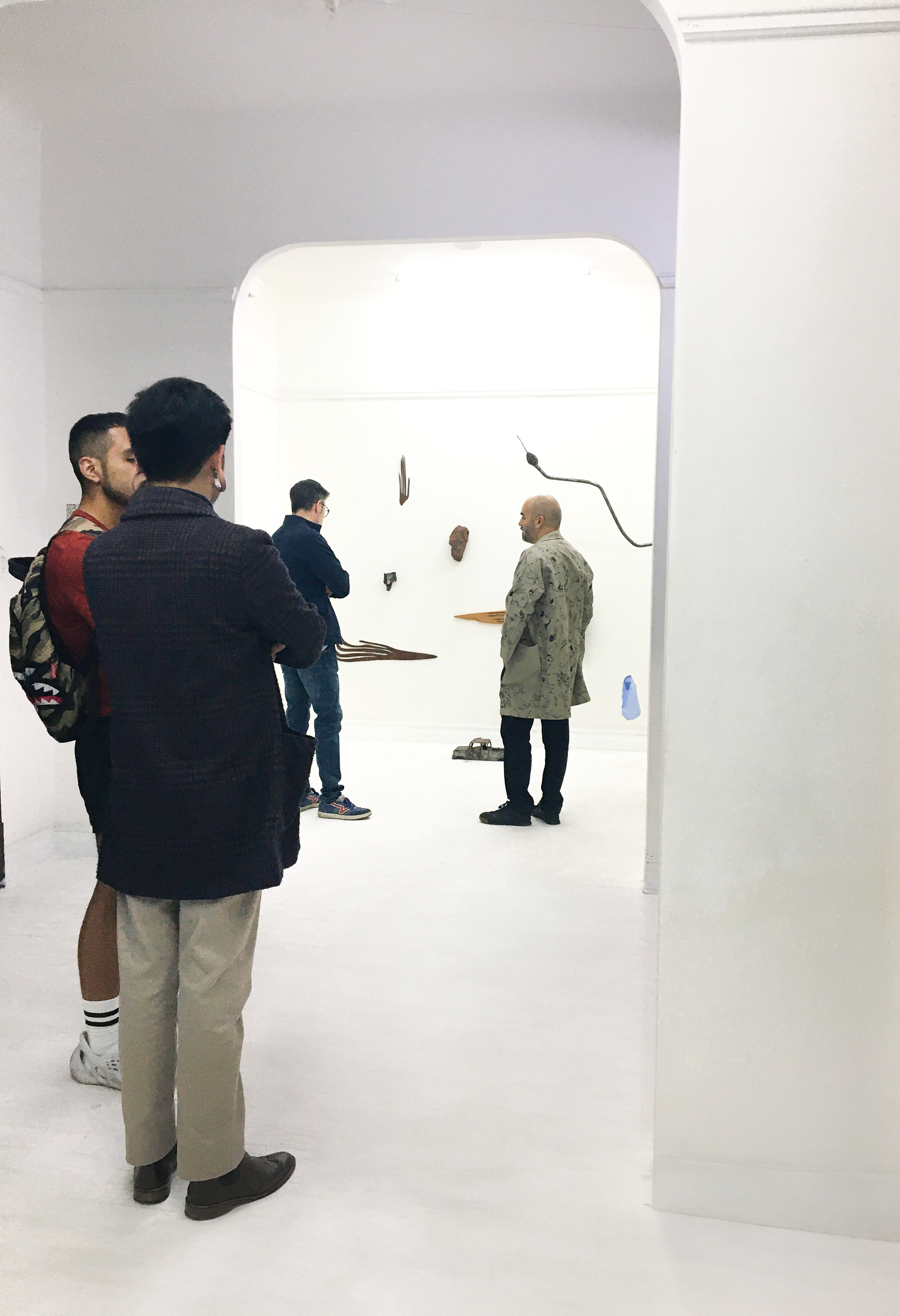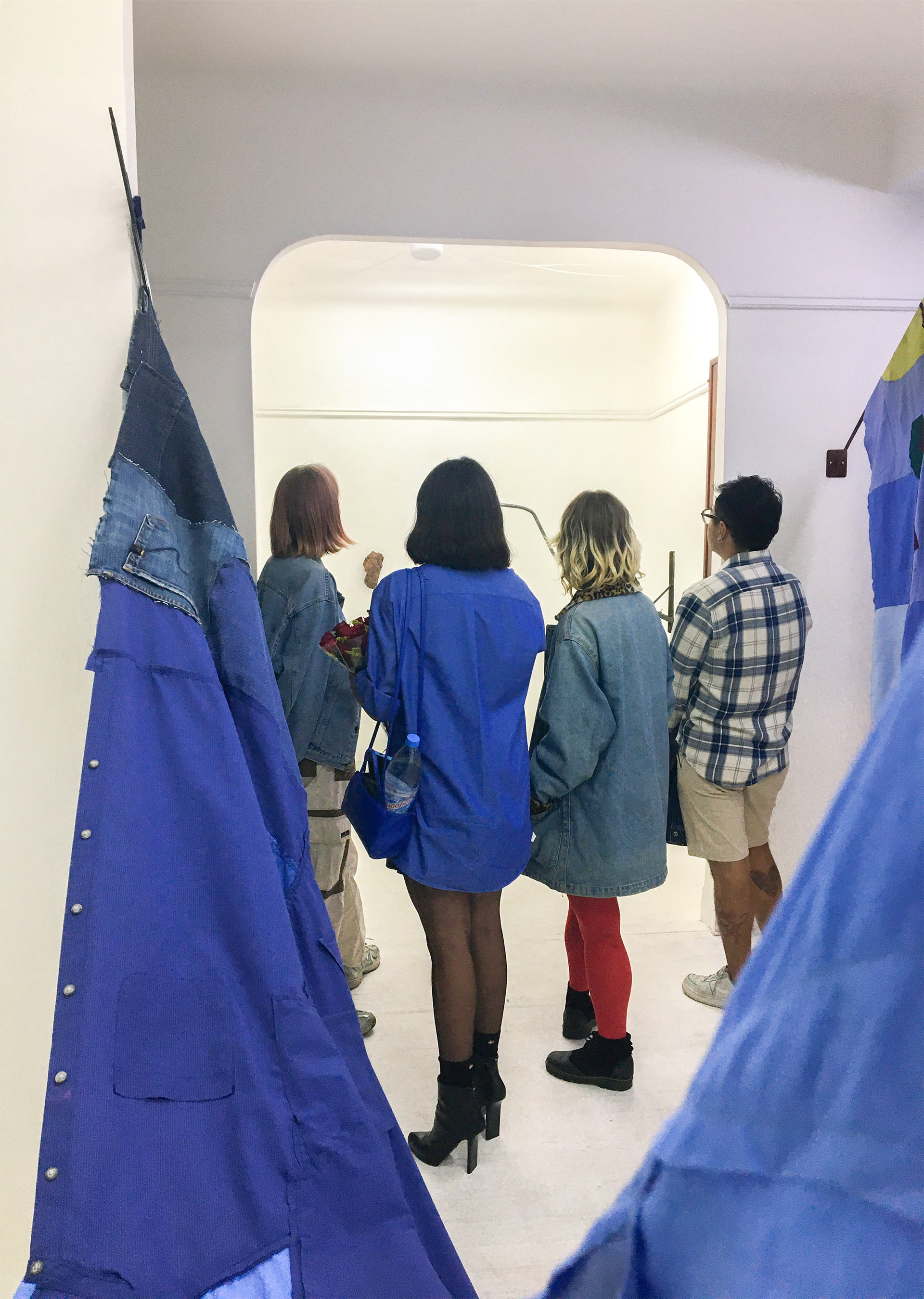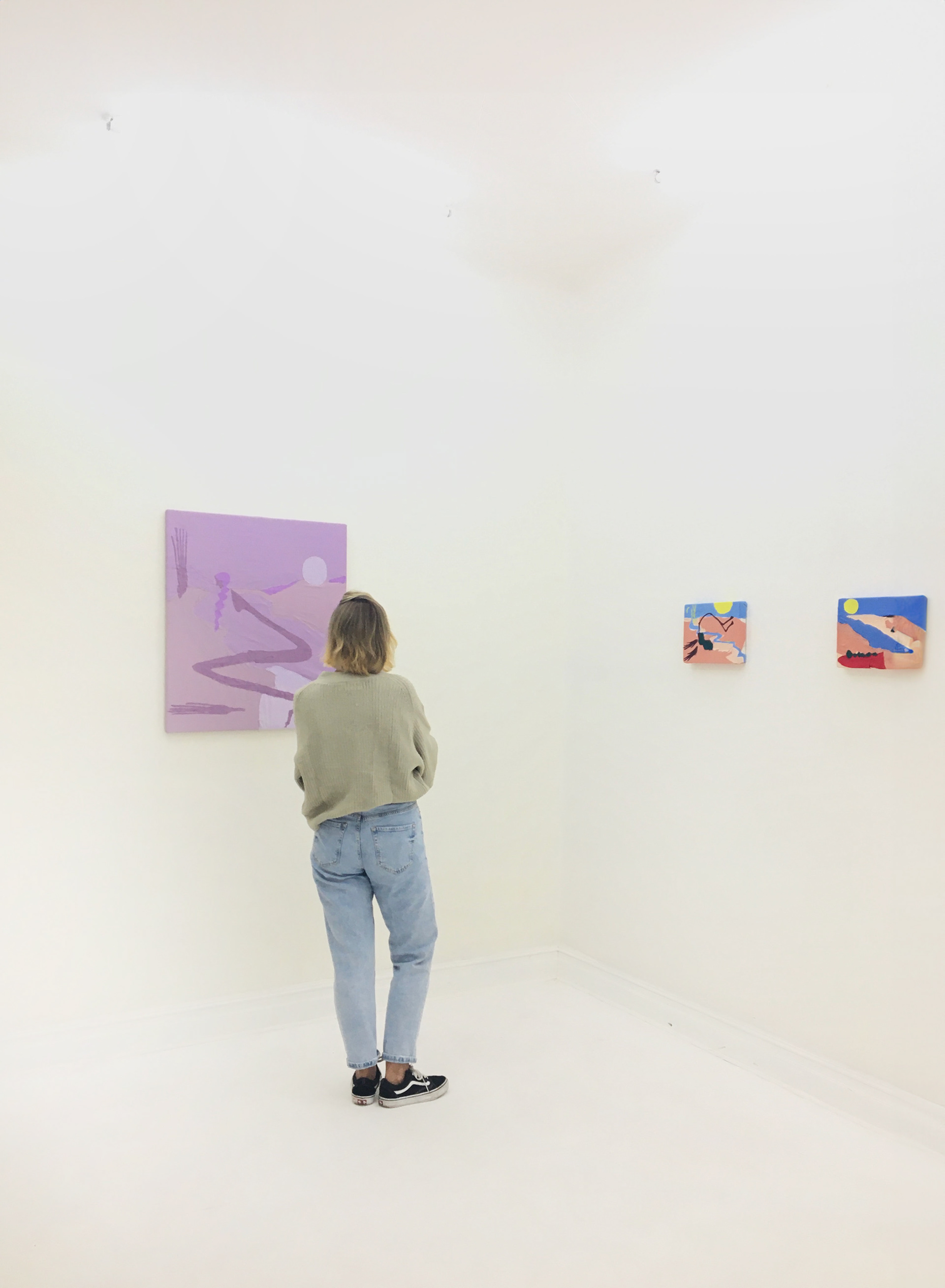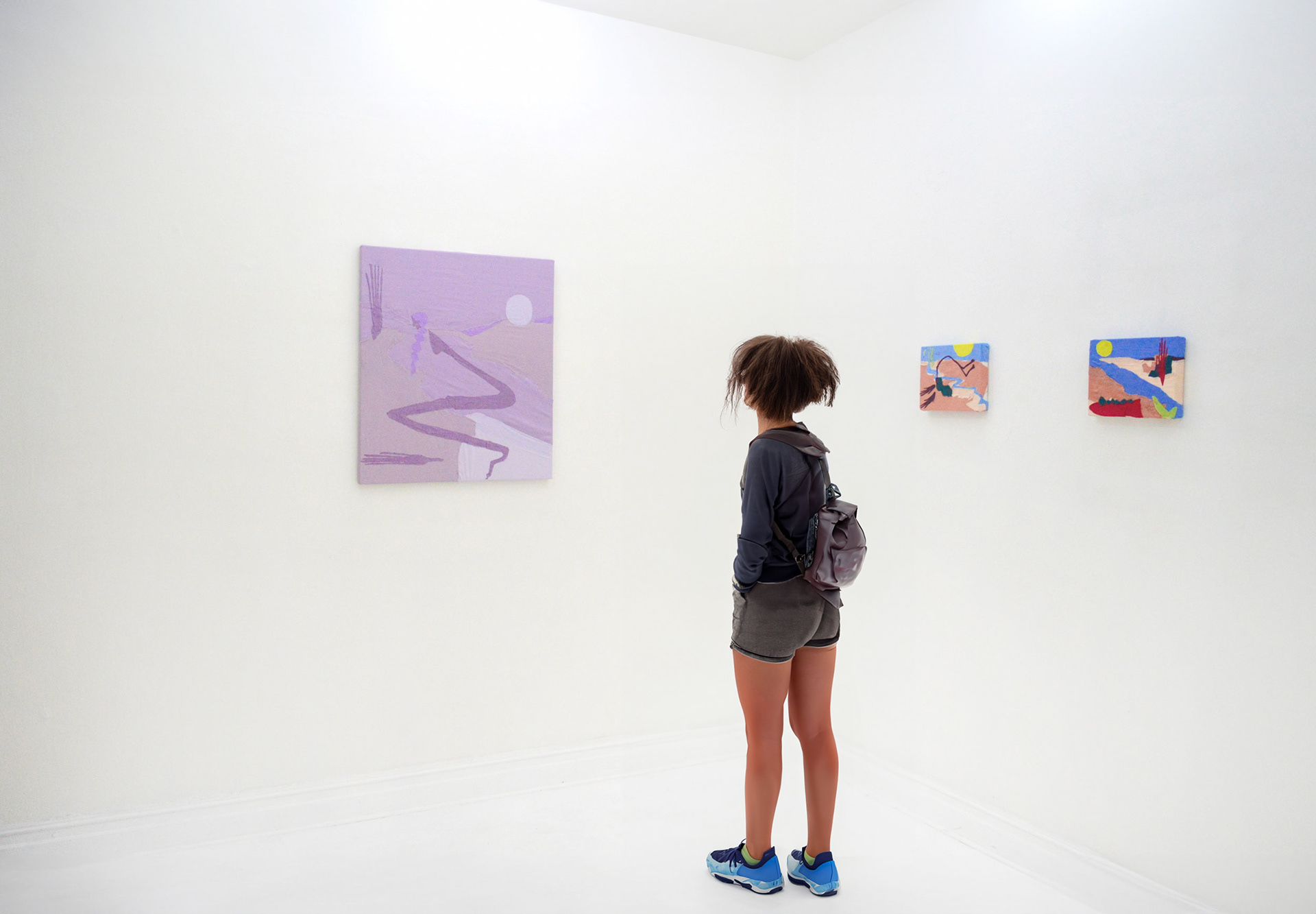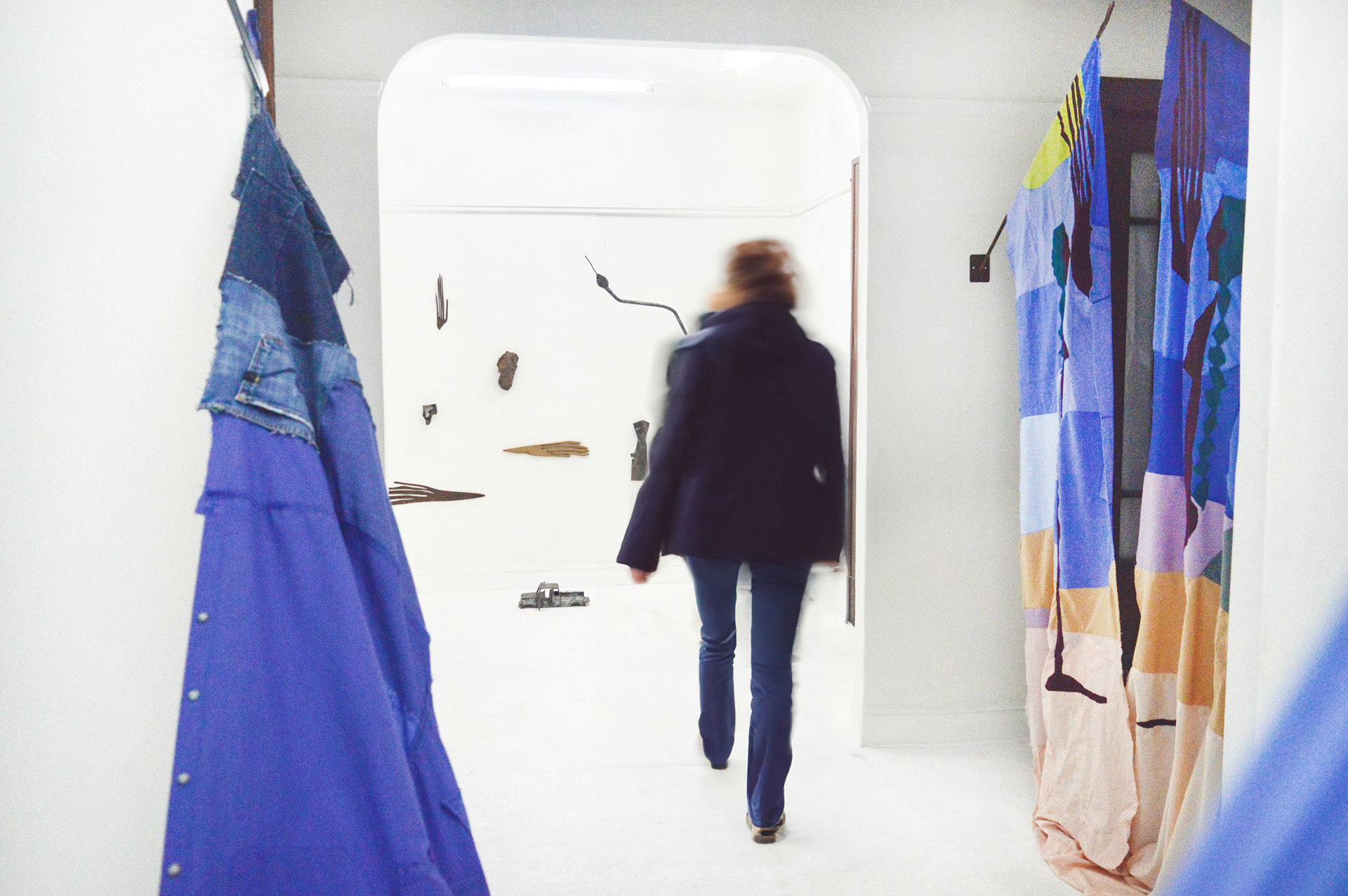LOS PIES ENRAIZADOS
Y LAS MANOS QUE SE ESTIRA
Hay toda una movilización de memorias. Yo estoy
pensando en que voy a llegar a ver un amanecer de
este mundo oscuro que estamos viviendo; ese es mi
deseo, porque yo siento que esa corriente ya está. En la
memoria, en la música, en el ritual…
Silvia Rivera Cusicanqui
El tránsito de personas rumbo a Estados Unidos de América siempre ha sido complejo; con cambios de patrones y dinámicas, sometidas a los constantes cambios políticos y económicos de las regiones involucradas. En un mundo post pandémico, Europa Occidental y Norteamérica fomentan el tránsito de mercancías y el turismo, pero relegan la seguridad humana de los habitantes del sur americano, del mundo arabe y de África, dando paso a una restrictiva securitización que permite justificar la indiferencia y la contención. En la Ciudad de México nos enfrentamos a un cruce de migraciones que convierten el territorio en una gran pieza de retazos sociales y culturales en constante tensión y cambio. Estos retazos de diversos géneros y procedencias se unen con hilos y agujas en una labor que nos recuerda una profesión que está íntimamente ligada a las mujeres latinoamericanas, pero también atravesada por la explotación, la inseguridad y la vulnerabilidad: la costura.
Liza Saldivar es originaria de Texas y migró a México para pintar, acompañada de un proceso personal bautizado como asimilación inversa en una búsqueda continua de la identidad, pero también para recuperar el conocimiento ritual y la historia sagrada de sus ancestras. Estos procesos no han sido libres de dolor, las herramientas para encontrar su técnica y visualizar la cromática de sus contradicciones culturales las ha encontrado a lo largo de un camino intrincado y podemos ver sus huellas aún frescas. Esas huellas también podemos encontrarlas en el cuerpo, en los cuerpos migrantes que sueltan sus posesiones para cruzar hacía ese otro lado donde tomarán otras marcas para cubrirse y camuflarse. Sabemos bien qué difícil es cubrirse con marcas para ocultar la herencia indígena, la herencia mexicana, la herencia latina. En un mundo en crisis migratoria, el cuerpo es un centro de choque al cual vestimos de etiquetas con distintos valores en el mercado.
Con los pies enraizados, Saldívar busca constantemente la liberación y estira su cuerpo para formar un puente sobre las fronteras, los muros y los ríos que le limitan. Y las manos que se estiran en señal de resiliencia, se sostienen del porvenir de la nueva mestiza. La pintura fue un medio que ahora es costura, los retazos de tela que ha recopilado en su camino le sirven como fragmentos para un firme discurso que va uniendo como une la memoria de las ancestras invocadas. Es allí donde vale rememorar la acción feminista latinoamericana de coser, urdir, resistir y reconstruir en la historia, procesos personales y colectivos de donde Liza se fortalece para crear las imágenes necesarias de una nación que no tiene territorio físico, un pluriverso donde habitamos
los cuerpos cuir y las mentes nahuales. La experiencia de la marginación y la exclusión sirven de contraveneno para curar la mordedura de la serpiente en un gesto a la sabiduría que emana de nuestros antepasados: después del odio, la sanación.
Retomando las huellas del cuerpo migrante, pensemos en las marcas que quedan en el cuerpo y las marcas con las que cubrimos los cuerpos. Es aquí donde los textiles y las costuras unen los patrones del sistema dominante, para vestir los anhelos del progreso, y codifican un sistema de valores, a presión de las sociedades blancas, para ocultar la verdadera piel cultural. Las marcas que plasman las etiquetas de la indumentaria, y que se venden por muchos dólares y euros, terminan en pacas migrantes que viajan para vestir a quienes quedan en los otros territorios que el mismo sistema denominó como en-desarrollo o el tercer mundo.
Saldívar recorta trozos de blue jeans, blazers y polos para zurcir composiciones de cuerpos fragmentados, estirados e imposibles, con una subversiva imaginación, pinturas textiles que hilan las múltiples y poliédricas identidades. El denim que fue fabricado en Tehuacán, para ser vendido en el fashion district de Los Ángeles, ahora es el cielo azul de un paisaje fronterizo; y el jersey de algodón, manufacturado en Chihuahua, para jugar al golf en Carolina del Norte, es el bucólico lavanda de un amanecer en el Río Grande.
Liza Saldívar funde sus manos estiradas en hierro e iza la bandera de un posible pluriverso, una bandera para la rebelión de los cuerpos que no son de aquí ni de allá, fabricada en tejidos stretch y que se tiende al piso para ser usada de puente, que se estira para subir los muros y burlar las fronteras; banderas que se enraízan desde el orígen y se alargan para alcanzar el porvenir. En este presente caótico y de gran vulnerabilidad para muchos cuerpos en el planeta, es vital re-pensar en banderas que no nos separan, más bien unen retazos de experiencias colectivas y se componen de símbolos, significados y tradiciones en constante cuestionamiento y reconfiguración. Liza recopila los fragmentos de sí misma para reconstruirse y urde su propia bandera de liberación, porque -citando a Anzaldúa-, for this chicana la guerra de la independencia is a constant.
Víctor Esquivel
@vick.es
FEET ROOTED
AND HANDS REACHING.
There is a whole mobilization of memories. I am thinking
that I am going to see a dawn of this dark world that we
are living in; That is my wish, because I feel that that
current is already there. In memory, in music, in ritual...
Silvia Rivera Cusicanqui
The transit of people to the United States has always been complex; with changes in patterns and dynamics, subject to the constant political and economic changes of the regions involved. In a post-pandemic world, Western Europe and North America promote the transit of goods and tourism, while downgrading the human security of the inhabitants of South America, the Arab world and Africa. The result is a false and restrictive securitization that justifies the indierence to the experience of human containment. In Mexico City we face a crossroads of migrations that turn the territory into a large piece of social and cultural remnants with constant tension and change. These scraps of various genres and origins are joined together with threads and needles in a work that reminds us of a profession that is closely linked to Latin American women, and also rife with exploitation, insecurity and vulnerability: sewing.
Liza Saldivar is originally from Texas and migrated to Mexico to paint. She is accompanied by a personal process called reverse assimilation, which involves a continuous search for identity and a journey to recover the ritual knowledge and sacred history of ancestors. This process has not been free of pain. The tools she uses in her techniques, represent the chromaticity of the cultural contradictions that she has found along her intricate path. We can see their traces still fresh. We also find these traces on the body, in the migrant bodies who drop their possessions to cross to that other side where they will apply other marks to cover and camouflage themselves. We know well how di cult it is to cover oneself with marks to hide one's heritage. Indigenous heritage, Mexican heritage, Latin heritage. In a world caught in migratory crisis, the body becomes a center of shock, covered by the many labels holding market value.
With her feet rooted, Saldívar constantly seeks release and stretches her body to form a bridge over the borders, walls and rivers that limit her. The hands are stretched out as a sign of resilience, holding on to the future of the new mestiza. Painting was a medium that has now become sewing, the scraps of fabric that she has collected along her way serve as fragments, which are then united as a firm discourse or a memory invoked by the ancestors. It is worth remembering the Latin American feminist action of sewing, weaving, resisting and reconstructing in history, personal and collective processes from which Liza is strengthened. She uses this strength to create the necessary images of a nation that has no physical territory, a pluriverse inhabited by bodies. and the nahual minds. The experience of marginalization and exclusion serves as the antidote. It can heal the snake bite when connected to the wisdom of our ancestors: beyond hatred, is healing.
Returning to the traces of the migrant body, let's think about the marks that remain on the body and the marks that we use to cover our bodies. It is here where textiles and sewing unite the patterns of the dominant system, to clothe the desires of progress, and codify a system of values, under pressure from white societies. Used to hide the true cultural skin. The brands that appear on the clothing labels, and that are sold for many dollars and euros, end up in migrant bales. Those bales travel to clothe those who remain in territories referred to as in-development or the third world. Saldívar cuts out pieces of blue jeans, blazers and polo shirts to darn compositions of fragmented, stretched and impossible bodies, with a subversive imagination, textile paintings that weave together the multiple and polyhedral identities. The denim that was manufactured in Tehuacán, to be sold in the fashion district of Los Angeles, is now part of the blue sky of a border landscape. The cotton jersey, manufactured in Chihuahua, and used for playing golf in North Carolina, is now the bucolic lavender of a sunrise overlooking the Río Grande river.
Liza Saldívar melts her outstretched hands in iron and raises the flag of a possible pluriverse. The flag signifies a rebellion of bodies that are neither from here nor there. They are made from stretched fabrics, stretched to the floor to be used as a bridge, stretched to climb the walls and circumvent the borders. These flags take root from the origin and lengthen toward the future. In the midst of this chaotic present and great vulnerability for many bodies on the planet, it is vital to rethink flags. We can reimagine flags that do not separate us. These flags unite fragments of collective experiences and are made up of symbols, meanings and traditions in constant questioning and reconfiguration. Liza collects the fragments of herself to rebuild herself and weaves her own flag of liberation, because - quoting Anzaldúa -, for this chicana la guerra de la independencia is a constant.
Víctor Esquivel
@vick.es
